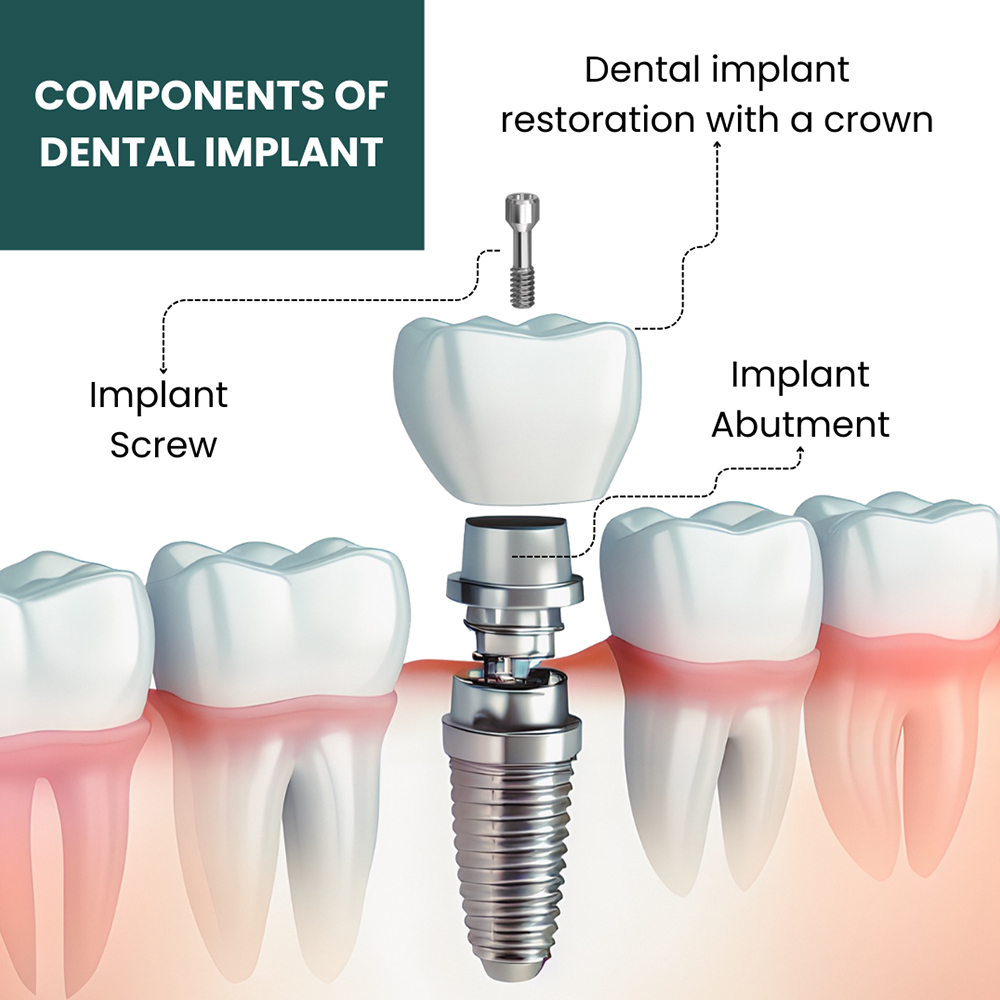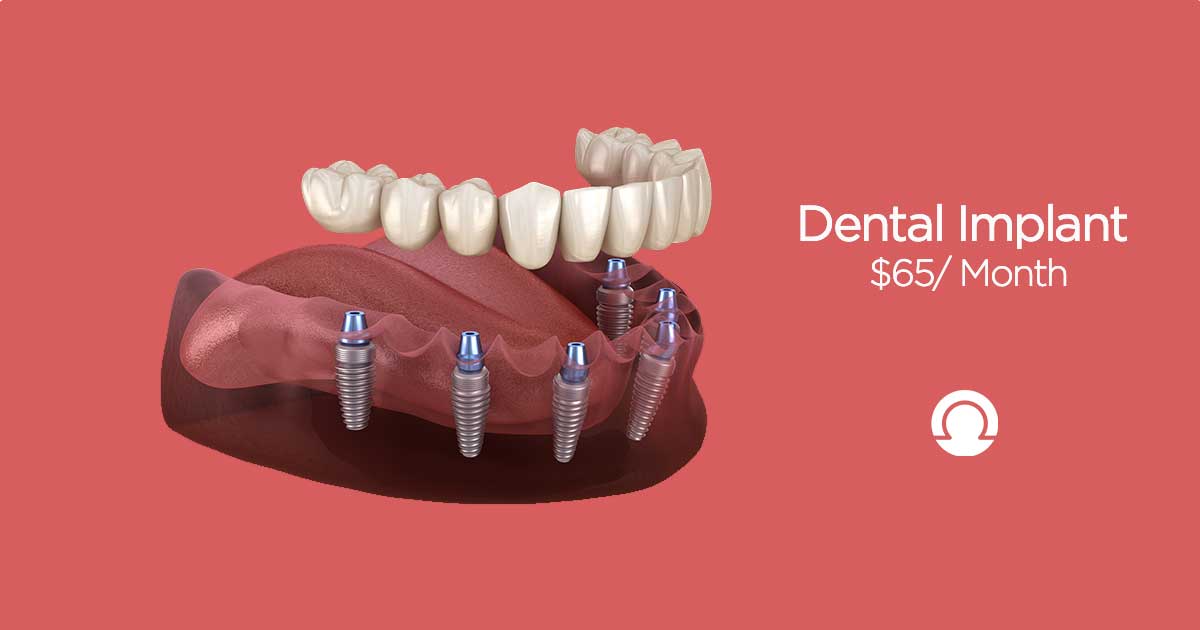The 10-Minute Rule for Dental Sense
The 10-Minute Rule for Dental Sense
Blog Article
More About Dental Sense
Table of ContentsThe Ultimate Guide To Dental SenseThe Best Strategy To Use For Dental SenseDental Sense Can Be Fun For EveryoneNot known Facts About Dental Sense
are medical devices operatively dental implanted into the jaw to recover a person's ability to eat or their look. They give support for fabricated (fake) teeth, such as crowns, bridges, or dentures. When a tooth is lost because of injury or condition, an individual can experience complications such as quick bone loss, malfunctioning speech, or adjustments to chewing patterns that result in pain.Oral implant systems contain an oral implant body and dental implant joint and may also include a joint fixation screw. Cosmetic dentistry services. The oral implant body is surgically placed in the jawbone instead of the tooth's root. The oral implant joint is typically connected to the dental implant body by the joint addiction screw and expands via gums right into the mouth to sustain the attached fabricated teeth
(https://dentalsense1.wordpress.com/2025/01/11/dental-implants-root-canal-procedures-professional-teeth-whitening/)Framework of The Oral Implant System selecting oral implants, speak to your dental service provider regarding the possible advantages and threats, and whether you are a candidate for the procedure. Things to consider: Your general health is an important element in identifying whether you are an excellent candidate for oral implants, for how long it will take to recover, and just how long the implant might stay in area.
Smoking might influence the healing process and lower the long-lasting success of the implant. The healing procedure for the implant body may take a number of months or longer, during which time you normally have a short-lived abutment in area of the tooth. the dental implant procedure: Carefully adhere to the oral hygiene instructions offered to you by your dental copyright.
Not known Facts About Dental Sense
Implant failing can lead to the need for another surgery to take care of or change the implant system. Brings back the capability to eat Recovers cosmetic appearance Aids keep the jawbone from reducing due to bone loss Protects the wellness of the bordering bone and gum tissues Helps maintain surrounding (neighboring) teeth steady Enhances lifestyle Damage to bordering all-natural teeth during implant placement Injury to the surrounding cells during surgical procedure, such as sinus opening Injury throughout surgical treatment (as an example, fracture of bordering jawbone) Inadequate feature, such as seeming like the teeth do not bite with each other usually A feeling that the tooth hangs or twisting in place resulting from an abutment screw loosening Implant body failing (looseness of the implant body) as a result of systemic infection, which may be most likely in patients with uncontrolled diabetes mellitus as a result of neighborhood infection in bone and gums supporting the dental implant body as a result of delayed recovery, which may be more probable in individuals who smoke Difficulty cleaning up the periodontals around the dental implant, causing poor oral hygiene Neglected periodontal disease Post-surgical tingling as a result of nerve impingement or damage Always notify wellness care providers and imaging technicians that you have dental implants before any kind of magnetic vibration imaging (MRI) or x-ray procedures.
FDA is not familiar with any kind of negative events reported for MRI or x-ray treatments with oral implants. Dental implants systems are typically made from materials that adhere to worldwide consensus requirements of the International Company for Standardization (ISO) or ASTM International. These criteria have details of what makes a secure product.

A dental implant is a structure that replaces a missing tooth. With screw-like devices, the cosmetic surgeon inserts an implant right into the jawbone, and it acts as a support for a fabricated tooth, called a crown.
Dental Sense Fundamentals Explained
Some individuals are not qualified for dental implant surgery. It is for dental doctors to run on individuals with: intense illnessuncontrollable metabolic diseasebone or soft cells illness or infectionIf these issues are fixed, a person can have the surgery. In, oral you can try these out surgeons refrain from operating individuals with: If people with any of the above undergo oral implant surgical procedure, there is a greater threat of the dental implant falling short.

Oral dental implant surgical procedure is a tailored procedure. It's not the same for everyone. The following provides a general introduction of what you can anticipate your dental expert, dental surgeon, periodontist or prosthodontist to do: Place the implant surgically. Give you time to recover. Affix the blog post and last crown, bridge or denture.
Next off, your doctor will meticulously put the oral implant right into your jaw. If your dental implant is near the front of your mouth, your dental practitioner will make a short-term tooth for you to use until you heal.
Indicators on Dental Sense You Should Know
Your copyright can tell you what to anticipate in your situation. Throughout the recovery phase, your jawbone needs to fuse to the dental implant. This procedure, called osseointegration, is important for stability and long-lasting success. This procedure can take anywhere from 3 to nine months. In many cases, it may take longer.
When your dental implant heals, your dental professional can affix the joint (tiny connector article) and your final repair (crown, bridge or denture). This usually takes about one hour to finish and might require a second minor surgical procedure. You should not really feel any pain throughout your dental implant procedure because your service provider will certainly use medicine to numb your gum tissues.
Report this page